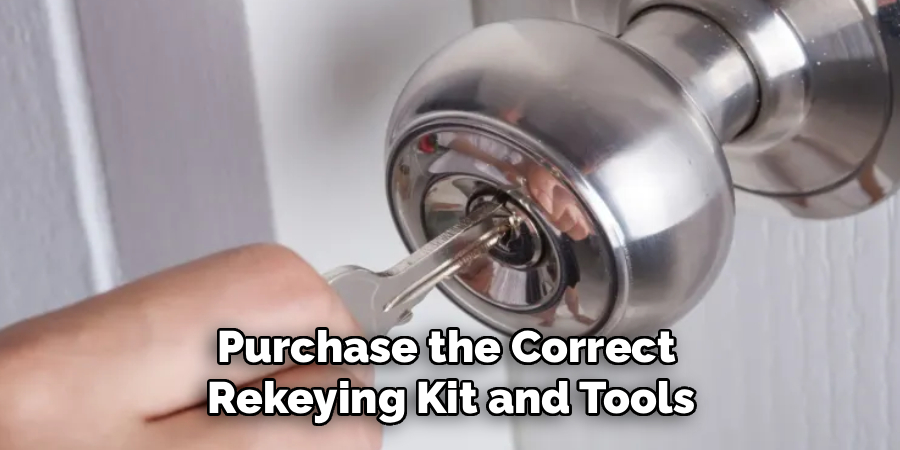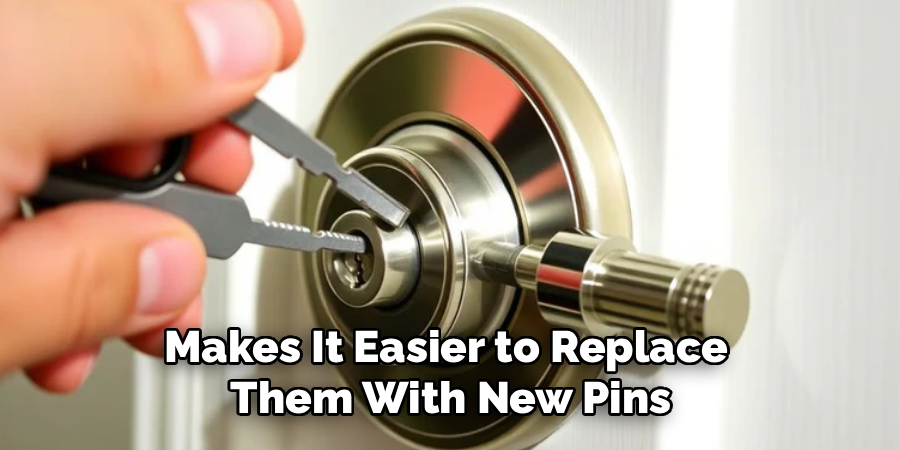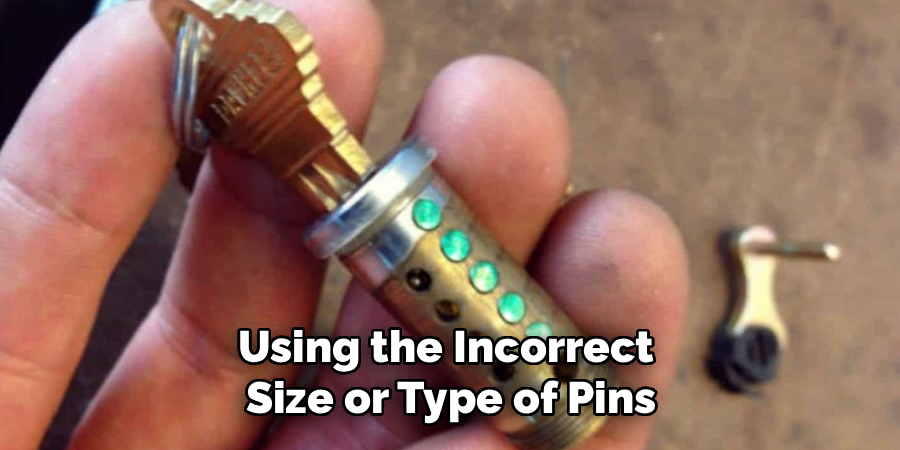How to rekey a lock cylinder might seem like a daunting task, but it’s a skill that any home gardener or DIY enthusiast can easily master with the right guidance. Whether you’ve recently moved into a new home, lost a key, or want to enhance your home security, rekeying is an effective solution. It allows you to keep your existing lock while changing the internal mechanism so old keys no longer work.

The process begins with removing the lock cylinder from the door. You’ll typically need a screwdriver to detach the screws holding it in place. Once removed, carefully disassemble the cylinder to access the pins inside. This step requires precision, as you’ll need to take note of the existing pin configuration. Using a rekeying kit, replace the old pins with new ones that match your new key’s cut. After reassembling the cylinder, reinstall it into the door and test the new key to ensure everything functions smoothly. Patience and attention to detail are key to successfully rekeying a lock.
This step-by-step guide will walk you through exactly how to rekey a lock cylinder, ensuring a seamless process from start to finish. No matter your experience level, by the time you’re done reading, you’ll feel confident enough to tackle this useful home project.
Why Rekeying a Lock Cylinder is Important
Rekeying a lock cylinder is more than just a practical skill; it’s a vital step in maintaining home security. Here’s why it’s worth learning:
- Enhanced Security – If someone untrustworthy has access to your old keys, rekeying prevents unauthorized entry without needing to replace the entire lock.
- Cost-Effectiveness – Full lock replacements can be expensive. Rekeying is a budget-friendly alternative that delivers the same level of security.
- Convenience – If you’re juggling multiple keys for different doors, rekeying multiple locks to use the same key simplifies your daily routine.
- Control Over Access – Whether you’ve just moved into a new property or experienced a security breach, rekeying ensures peace of mind by giving you complete control over who can access your home.
- Quick Process – Rekeying is a quick and efficient process that can be completed within minutes by an experienced locksmith. This minimizes any inconvenience or disruption to your daily routine.
This process ensures your home stays safe and maintains a sense of order. Plus, it’s an excellent DIY project for those who enjoy tackling household challenges.
7 Step-by-Step Guide to Rekey a Lock Cylinder
Learning how to rekey a lock cylinder doesn’t have to be intimidating. Follow these seven clear steps to succeed.
Step 1: Identify the Lock Type
Understanding your lock type is the foundation of a successful rekeying process. Look closely at the lock cylinder you want to rekey. Is it a standard pin tumbler lock, a deadbolt, or a doorknob lock? Familiarizing yourself with the specific locking mechanism allows you to purchase the correct rekeying kit and tools needed for the job.

For instance, some locks use advanced pins, while others are simpler. A compatible kit will include the necessary pins and tools tailored to your lock’s brand or structure, saving you from headaches later.
Step 2: Gather Your Tools and Hardware
You’ll need the following tools to ensure an efficient rekeying process:
- A screwdriver
- A key plug follower
- Pliers
- A rekeying kit matching your lock make and model
Rekeying kits are easily available at hardware stores or online. These kits contain replacement pins, tools, and sometimes even instructions for specific brands. Having everything you need within arm’s reach helps you stay focused and organized.
Step 3: Remove the Lock from the Door
Use a screwdriver to detach the lock cylinder from the door. Depending on the lock’s style, this might involve unscrewing mounting screws, removing decorative plates, or detaching the mechanism itself. Be sure to keep all small screws and pieces in a safe place as you’ll need them later.
Once removed, inspect the lock to confirm there’s no damage or wear. This ensures smooth reassembly once the rekeying process is complete.
Step 4: Take Apart the Lock Cylinder
Now, locate the cylinder, which is the central part of the lock housing. Using your original key, insert and turn it slightly to the ‘unlock’ position. Then, slide the cylinder out from its casing using your key plug follower.
This step requires precision—keep the lock pins secure as you expose the internal components of the cylinder. Avoid rushing, as damaging the lock’s inner parts can complicate the project.
Step 5: Swap Out the Old Pins
This is the crux of rekeying. Once you’ve exposed the internal pins, carefully remove the old ones. Most rekeying kits include a schematic showing pin placements, which makes it easier to replace them with new pins.

Match the new pins according to the key cuts on your new key. Ensure each pin correctly aligns with the key for smooth operation. This step requires an eye for detail—mismatched pins can prevent the key from functioning effectively.
Step 6: Reassemble the Lock Cylinder
With the new pins securely in place, gently push the cylinder back into its casing. Use the original key to confirm the mechanism turns smoothly. If the lock doesn’t operate as expected, double-check the pins for any placement errors.
After everything is aligned, return the retainer ring and other lock components to their original positions. Carefully reverse the disassembly steps to return all pieces to the lock body.
Step 7: Reinstall the Lock
Now, it’s time to reinstall the freshly rekeyed lock. Attach the cylinder to the door using the screws and hardware you set aside earlier. Tighten everything securely, but avoid overtightening to prevent unnecessary strain on the lock mechanism.
Test the lock repeatedly using the new key to ensure it operates seamlessly. Congratulations—you’ve successfully rekeyed your lock cylinder!
Common Rekeying Mistakes
Rekeying a lock is a precise process, and even small errors can lead to significant issues. One common mistake is failing to keep track of the small components, such as pins or springs, which are essential to the lock’s function. Losing or misplacing these parts can render the lock unusable. Another frequent error is using the incorrect size or type of pins for the lock cylinder, which can prevent the key from turning smoothly or at all.

Additionally, overtightening screws during reassembly can strain the mechanism and potentially damage the lock. Lastly, not testing the lock thoroughly after rekeying can leave unnoticed problems, leading to inconvenience later on. Taking a methodical and cautious approach is key to avoiding these pitfalls.
Frequently Asked Question
Here are some frequently asked questions about how to rekey a lock cylinder, along with detailed answers to help you better understand the process.
Q1. Can I rekey a lock without the original key?
Yes, but it requires additional tools. Rekeying without the original key involves picking or drilling the lock to access the cylinder. Locksmiths typically perform this service, as it can be tricky for beginners. If you don’t have the original key, you also have the option of replacing the lock entirely.
Q2. How much does it cost to rekey a lock cylinder?
Rekeying is relatively affordable. A rekeying kit may cost anywhere from $10–$30, while hiring a locksmith may cost $50–$150 depending on the complexity and number of locks. Either way, rekeying is far cheaper than replacing all the locks in your home.
Q3. Is it better to rekey or replace a lock?
Rekeying is often the better choice if your current lock is in good condition. It’s cost-effective and maintains your home’s existing aesthetic. However, replacing a lock is recommended if the lock mechanism is damaged or outdated.
Q4. How long does it take to rekey a lock cylinder?
It usually takes 15–30 minutes per lock, depending on your familiarity with the process. For beginners, it might take up to an hour. With practice, you’ll get faster and more efficient.
Q5. Can rekeying improve the security of my home?
Absolutely. Rekeying allows you to prevent access to people with old or unauthorized keys. It’s a smart security measure, especially after losing a key, moving into a new house, or experiencing a break-in.

Conclusion
Mastering how to rekey a lock cylinder is a practical and rewarding skill that enhances home security without breaking the bank. It’s a straightforward process with the right tools, and as you’ve seen in this guide, even beginners can achieve professional results by following the instructions carefully.
By taking the time to rekey your locks, you not only secure your home but also gain peace of mind knowing that you are in control of who has access to your space. This simple yet effective measure can make a significant difference in maintaining your safety and that of your loved ones.
Rekeying not only saves you money but also gives you complete control over who can access your property. Now that you’ve learned the steps, why not give it a try? Rekeying a lock cylinder is easier than you think, and the peace of mind it brings makes the effort worthwhile.
About
Safety Fic is a distinguished figure in the world of Diy design, with a decade of expertise creating innovative and sustainable Diy solutions. His professional focus lies in merging traditional craftsmanship with modern manufacturing techniques, fostering designs that are both practical and environmentally conscious. As the author of diy, Safety Fic delves into the art and science of Safety Fic-making, inspiring artisans and industry professionals alike.
Education RMIT University
(Melbourne, Australia) Associate Degree in Design (Safety Fic) Focus on sustainable design, industry-driven projects, and practical craftsmanship. Gained hands-on experience with traditional and digital manufacturing tools, such as CAD and CNC software.
Nottingham Trent University
(United Kingdom) Bachelor’s in diyfastly.com and Product Design (Honors) Specialized in product design with a focus on blending creativity with production techniques. Participated in industry projects, working with companies like John Lewis and Vitsoe to gain real-world insights.
Publications and Impact
In diy, Safety Fic his insights on indoor design processes, materials, and strategies for efficient production. His writing bridges the gap between artisan knowledge and modern industry needs, making it a must-read for both budding designers and seasoned professionals.
